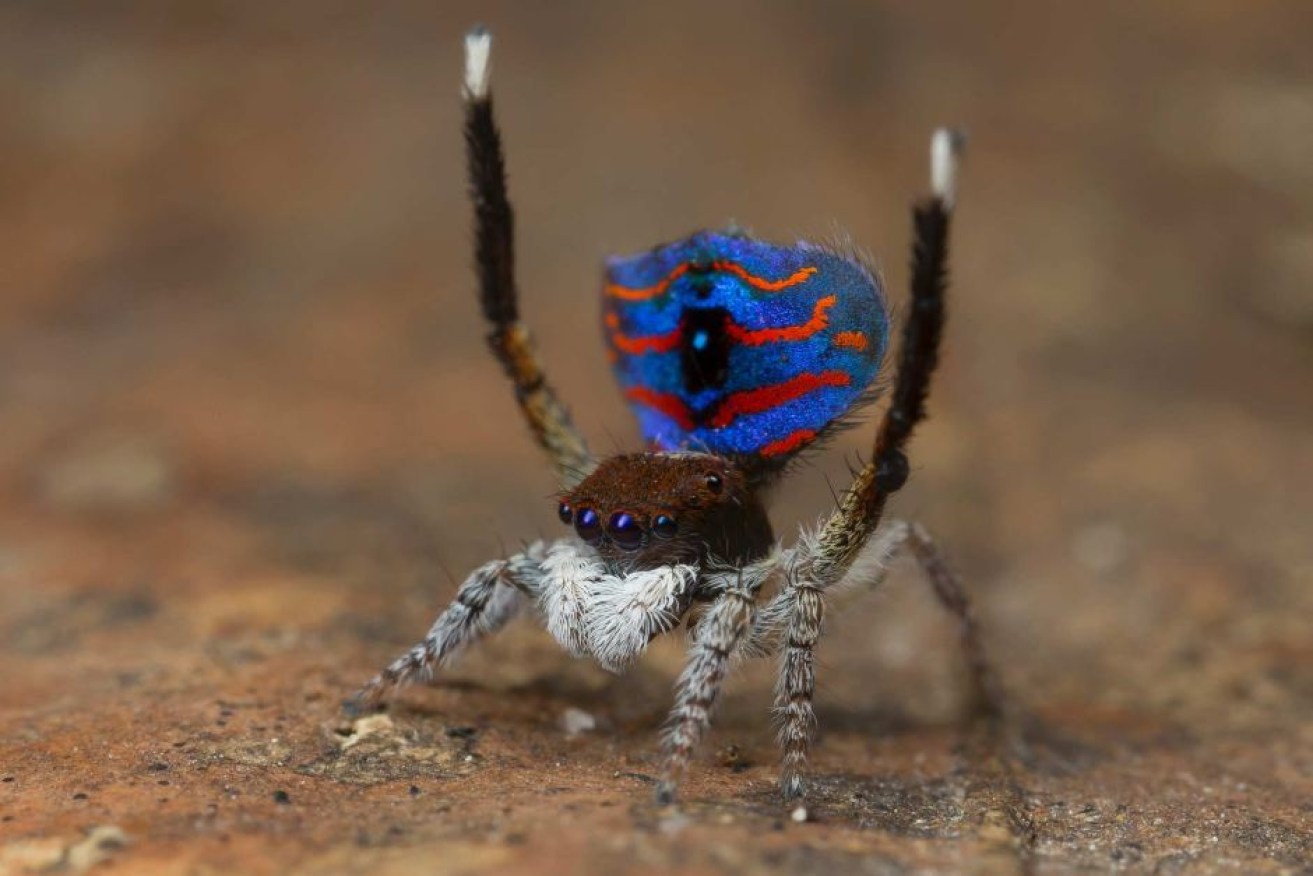Meet the newest peacock spiders: ‘People still get excited when they see them’

Peacock spiders are found across southern Australia. Supplied: Jurgen Otto
This photo isn’t fake.
These tiny, dazzling spiders are 100 per cent real – and scientists have just discovered another five species and sub-species in Western Australia.
They’re called peacock spiders and self-described “peacock spiderman” Jurgen Otto has spent years discovering and photographing them.
When he first spotted one of the unique creatures in bushland near Sydney about a decade ago, he said he almost stepped on it.
“I took a photograph and then later I went home, looked at it on the computer and was just blown away,” Dr Otto said.
“When I started with all this, there was not a single picture or video of a peacock spider on the internet.
“Nine years later now, you get many thousand hits when you type ‘peacock spider’ into Google.”

Dr Otto said Maratus cristatus had a pattern resembling the Union Jack. Photo: Jurgen Otto
The reaction of people when they see the latest finds remains the same.
“One could think that the novelty of this would all have worn off by now, but people still get excited when they see them,” he said.
Each new species ‘a complete surprise’
“Each new species is a complete surprise – the patterns and colours of each species are so different and so unpredictable, you never know what the next one and its display and courtship dance will look like.”
Most of the five discoveries were spotted in south-western WA, but peacock spiders can be found across southern Australia.
Dr Otto estimates there are now more than 60 species and sub-species of Australian peacock spiders. Thirty-nine of them were named by himself and fellow spider expert David Hill.

Maratus electricus stands out by its striking pattern of red lines. Photo: Supplied/Jurgen Otto
A year ago the ABC reported on Dr Otto’s discovery of seven new species.
The scientists have also relied on WA spider enthusiast David Knowles, who helped collect several of the new species after tip-offs from other photographers.
How do you actually identify a new species?
It certainly helps if you’ve got incredibly detailed pictures and videos, like the ones Dr Otto has published on his YouTube channel.
“In most peacock spider species – and the new ones are no exception – the males are strikingly coloured, and the patterns and colours are very distinctive, making it easy to distinguish one from another,” Dr Otto said.
“Cristatus has a pattern on its back that resembles the Union Jack and in addition has eight plumes of white setae (hairs) at its back that no other peacock spider has.
“Electricus stands out by its striking pattern of parallel red lines that make it look like a circuit board, and trigonus can be easily recognised by the white crown at the tip of its abdomen that is not present in any known species.”

Maratus trigonus’s white crown isn’t present in any known species, Dr Otto said. Photo: Supplied/Jurgen Otto
-ABC








